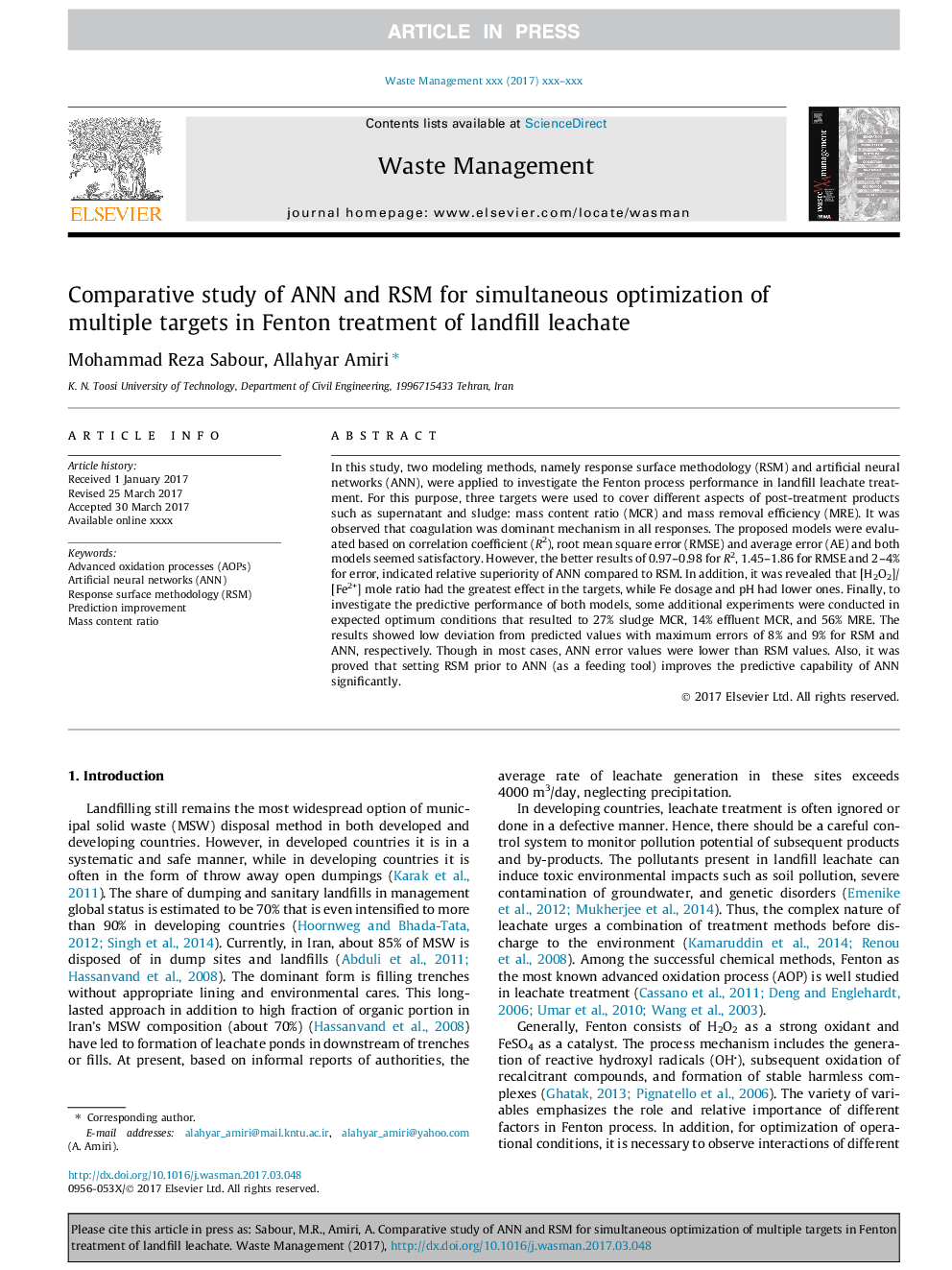| Article ID | Journal | Published Year | Pages | File Type |
|---|---|---|---|---|
| 5757129 | Waste Management | 2017 | 9 Pages |
Abstract
In this study, two modeling methods, namely response surface methodology (RSM) and artificial neural networks (ANN), were applied to investigate the Fenton process performance in landfill leachate treatment. For this purpose, three targets were used to cover different aspects of post-treatment products such as supernatant and sludge: mass content ratio (MCR) and mass removal efficiency (MRE). It was observed that coagulation was dominant mechanism in all responses. The proposed models were evaluated based on correlation coefficient (R2), root mean square error (RMSE) and average error (AE) and both models seemed satisfactory. However, the better results of 0.97-0.98 for R2, 1.45-1.86 for RMSE and 2-4% for error, indicated relative superiority of ANN compared to RSM. In addition, it was revealed that [H2O2]/[Fe2+] mole ratio had the greatest effect in the targets, while Fe dosage and pH had lower ones. Finally, to investigate the predictive performance of both models, some additional experiments were conducted in expected optimum conditions that resulted to 27% sludge MCR, 14% effluent MCR, and 56% MRE. The results showed low deviation from predicted values with maximum errors of 8% and 9% for RSM and ANN, respectively. Though in most cases, ANN error values were lower than RSM values. Also, it was proved that setting RSM prior to ANN (as a feeding tool) improves the predictive capability of ANN significantly.
Keywords
Related Topics
Physical Sciences and Engineering
Earth and Planetary Sciences
Geotechnical Engineering and Engineering Geology
Authors
Mohammad Reza Sabour, Allahyar Amiri,
